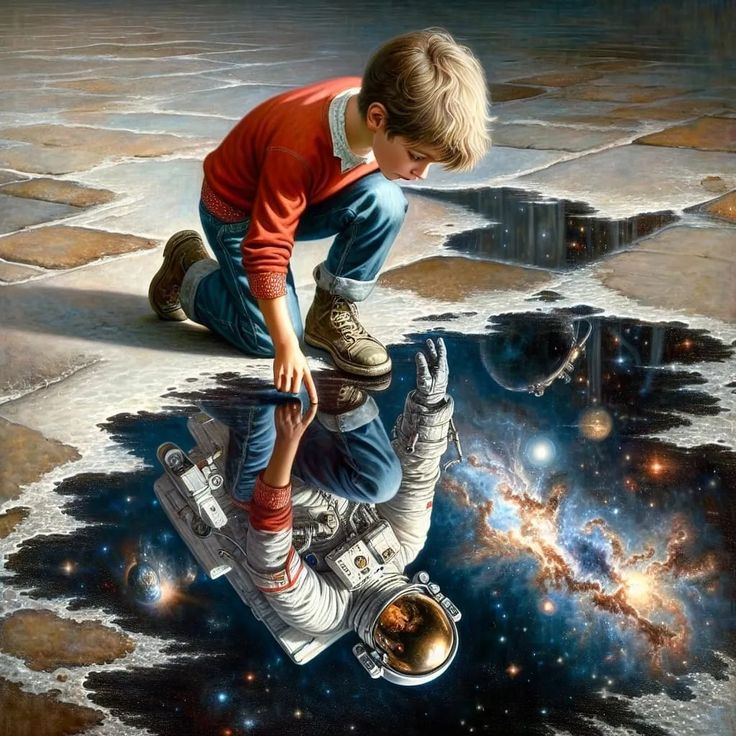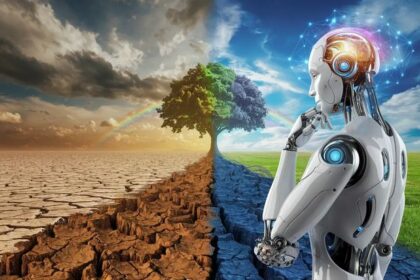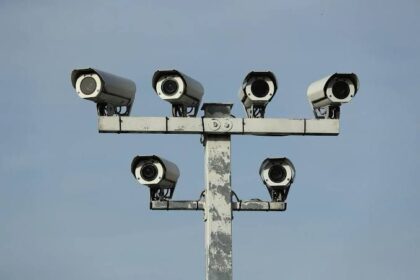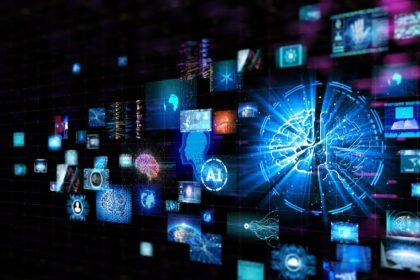Rilke, an Austrian poet, is said to have been walking along a cliff near the Duino Castle when he heard a voice in the wind saying, “Who, if I cried out, would hear me among the angelic orders?” The poet seized this creative moment and stretched it over ten years, the result of which came to be Duino Elegies, his most notable work. Mythical as it may seem, this story reveals something wonderful about the creation of art: the inspiration, intention, and emotion attached to it are something deeply human that no machine can possibly replicate. Machines can produce the outcome, but art is as much the outcome as it is the process. When we interpret art, we also look at the process of its creation through time: each individual stroke left by the painter, each verse extracted by the poet from the marrow of his lived experience.
What if this process of creation, as well as the created object, is not purely human and involves artificial intelligence? Does this AI-generated art qualify for the same value as human creation does? Is AI just another tool to enhance human capability for creativity, or does it alter something fundamental in the process of creation? These are the types of questions that this essay will tend to explore and answer.
The value of something can broadly fall into two categories: instrumental and intrinsic value. Instrumental value means that the object concerned is valuable as a means to some end external to itself and is valued based on the utility it offers in achieving the desired end. Intrinsic value means the object is valuable in and of itself and its purpose is internal to it.
If we begin with the premise that art is only instrumentally valuable, then the advent of artificial intelligence is likely to enhance its value. This means that there is some utility—be it economic, political, or moral—attached to the creation of art. Artworks, visual or textual, have historically been used by governments and regimes for political propaganda and by individuals to serve their material purposes, such as fame, glory, or money. Artificial intelligence enhances this utility by enabling us to produce art in a cost-effective, time-efficient manner with greater precision and refinement. AI models can write poetry and prose and create visual images on any given prompt in seconds. Thus, the instrumental purpose of art is better served this way, and human creation seems to be increasingly irrelevant in this regard because it is time-consuming, laborious, and imperfect.
However, the instrumental view of art is not the only way to value it. Historically, artists and thinkers have valued art for its intrinsic significance as human expression and a source of aesthetic pleasure. Walter Benjamin calls this the “aura” value of art, which refers to an artwork’s “unique presence in space and time”. The very purpose of an artwork is its uniqueness, which comes from the fact that each human being has a unique experience through space and time, and art is an expression of this experience. This intrinsic or aura value of art is lost in the infinite replicability of AI-generated art. Secondly, art in its intrinsic value is not meant to be time-efficient and perfect. It is meant to reflect the time and effort put into it and the imperfection of the human artist. This constitutes the essential merit of an artwork.
History also tells us that technology has always been integrated with traditional media of art and has enhanced it or brought about new fields of art. Humans have shifted from using natural colours for cave paintings to synthetic dyes and paints with sophisticated brushes and canvas. The invention of the camera opened the medium of photography in the field of visual arts but did not make the traditional art of painting irrelevant. This happened because the intrinsic value of painting as a form of human expression was still present, though its instrumental value as a record of historical events had been lost. However, what is different with AI-generated art is that the process of its creation is almost external to human beings. AI alienates human beings from the very process of creation—from the very factor that lends authenticity to an artwork.
From an artist’s perspective, the process of the creation of art is more significant than the outcome. The raw feeling attached to the consciousness of being engaged in an act of creation is what makes art valuable and authentic to its artist. Those who have engaged in any sort of creative work can understand that what means more for an artist is the act of creation and not what is created. A poet feels elated when verses begin to gush out like a fountain. This elation can only come from going through the process of creation. This means that the process of creation external to an artist is intrinsically meaningless for him or her.
This means that AI-generated art cannot be weighed on the same scales as humanly created art. Art that humans create remains inherently valuable even when its instrumental purpose is no longer relevant. AI-generated artwork, on the other hand, does not have any intrinsic value. However, this does not rule out the possibility of AI-generated artwork altogether. Painting and theatre not only survived the invention of photography and film but also retained their artistic value. The lesson history teaches us is that human creation will always have its place alongside technology because of its originality and authenticity. AI-generated art will become a new category in both visual and textual arts and will be valued accordingly.
To conclude, AI-generated art is becoming a separate category of art, which may not have intrinsic value because it alienates human beings from the process of creation but has instrumental importance. Human creation, with its uniqueness, originality, and authenticity, will continue holding its place.
















